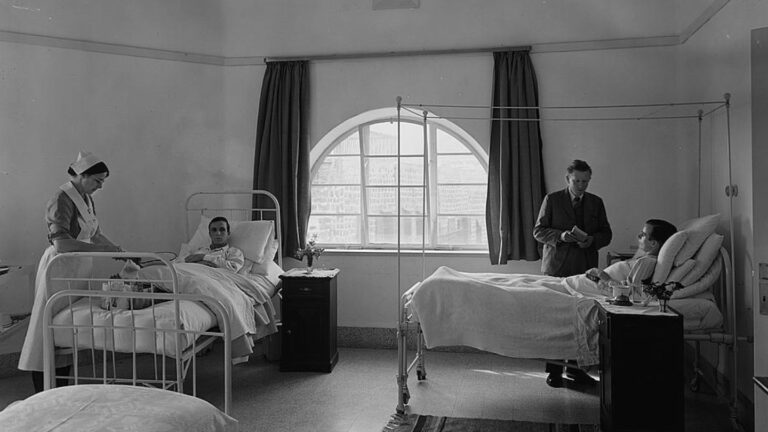Come visit Israel! Land of sunshine and endless summers!
Except that summertime eventually does come to an end, and with the first drop of rain, the entire country goes haywire.
Our region is experiencing particularly heavy rainfall this winter, and social media is awash with photos, videos and memes of Nahariya, Ashdod and Tel Aviv in various stages of submergence.
But this is not the first time that Israelis have been waylaid by the rain gods, as proven by these images of wet, wet, wet weather throughout the decades.
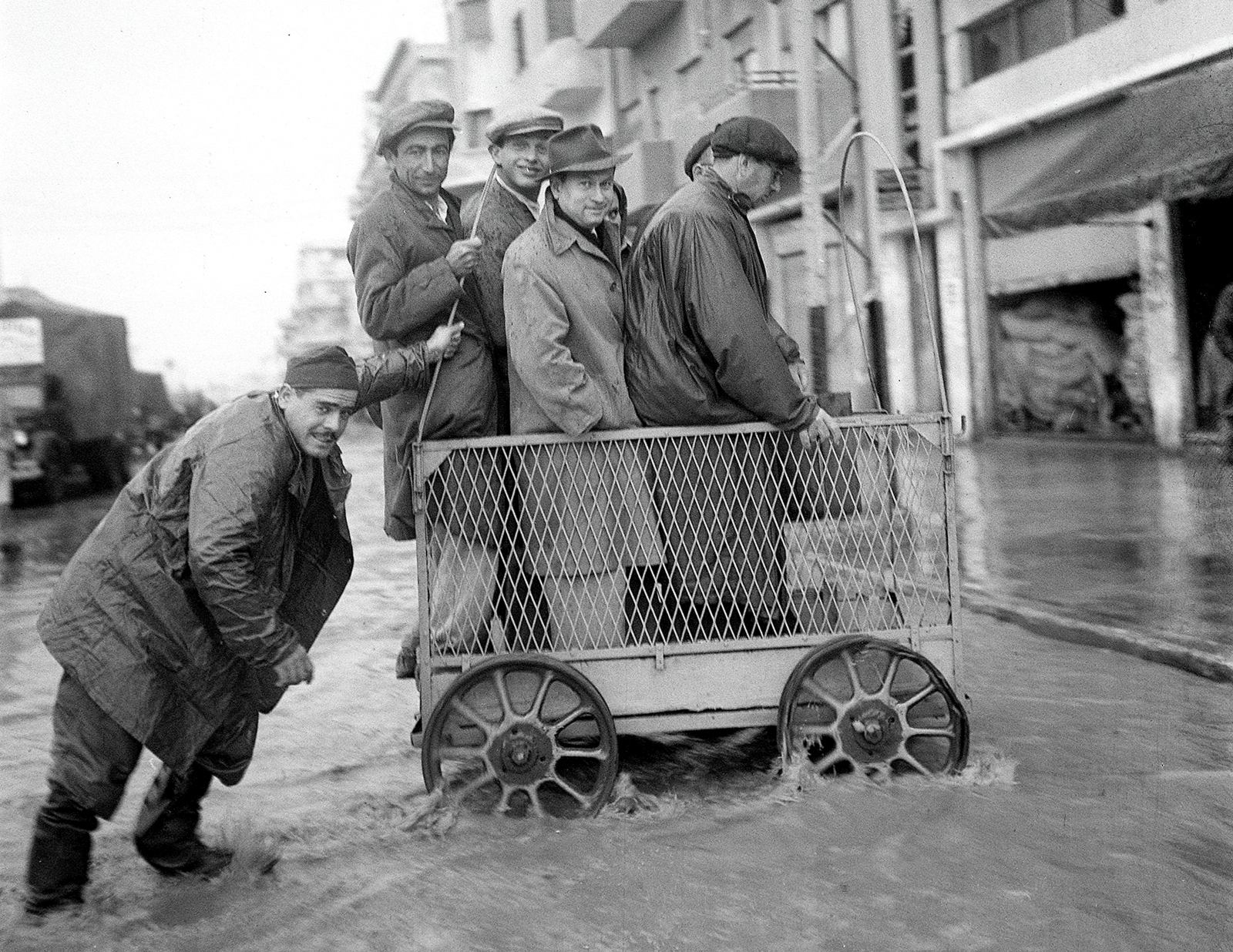
The winter rains of 1938 that overpowered Tel Aviv, especially the flooded Montefiore neighborhood, were captured by Carmel Newsreels. The newsreader praised the construction of a bridge over Wadi Musrara̶aka the Ayalon River — as the solution.
New immigrants from Yemen, flown to the newly founded State of Israel in “Operation Magic Carpet” (officially, “Operation on the Wings of Eagles”) were sent to ma’abarot, temporary housing situations that became all too permanent.
The Rosh Ha’ayin ma’abara, a former British Army encampment (note the name “Breezy Manor” emblazoned over the tent flap), was one of those camps affected by flooding in 1949.
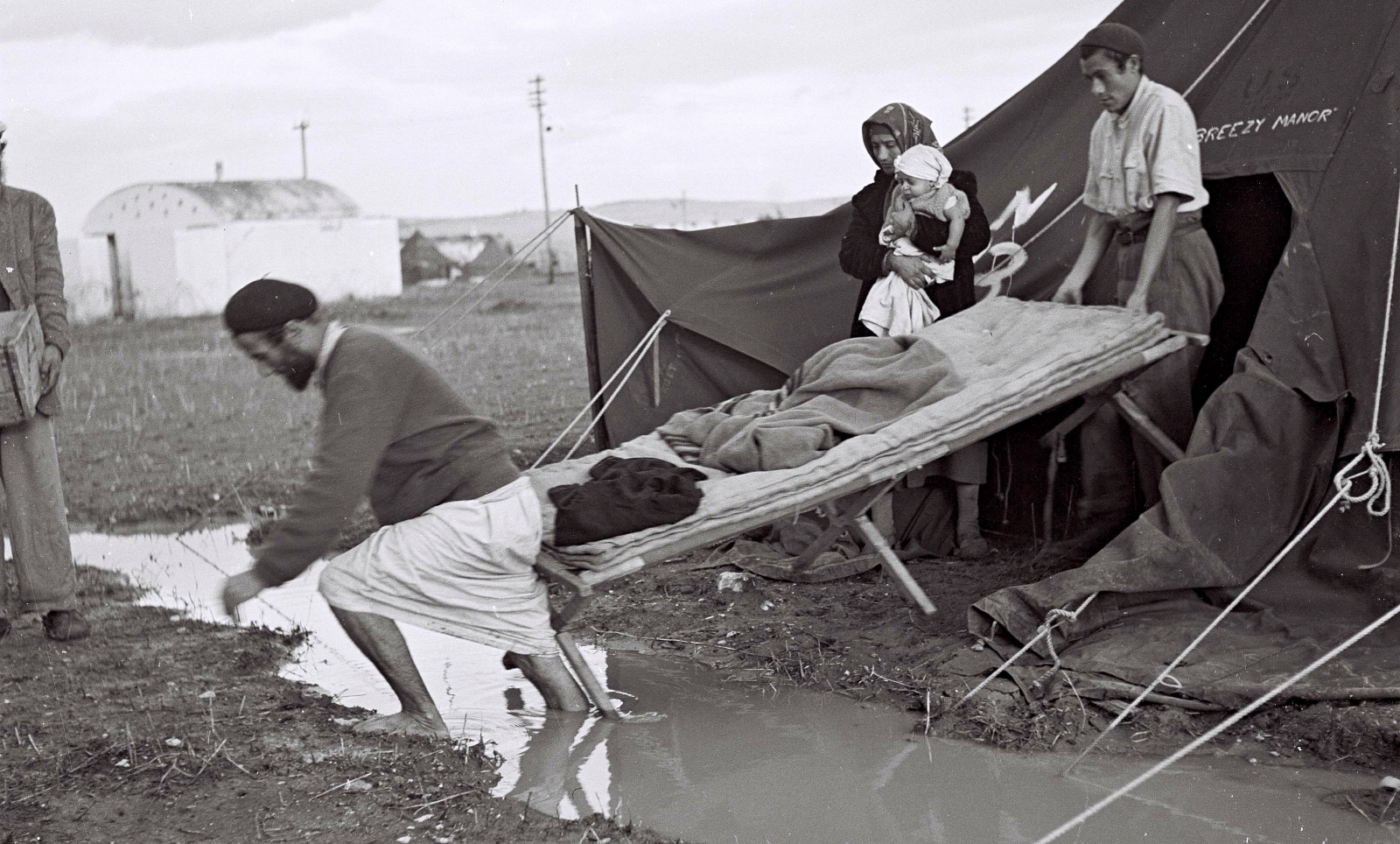
City residents weren’t immune to the vagaries of bad weather either, with many Tel Aviv neighborhoods– new and old –affected by water.
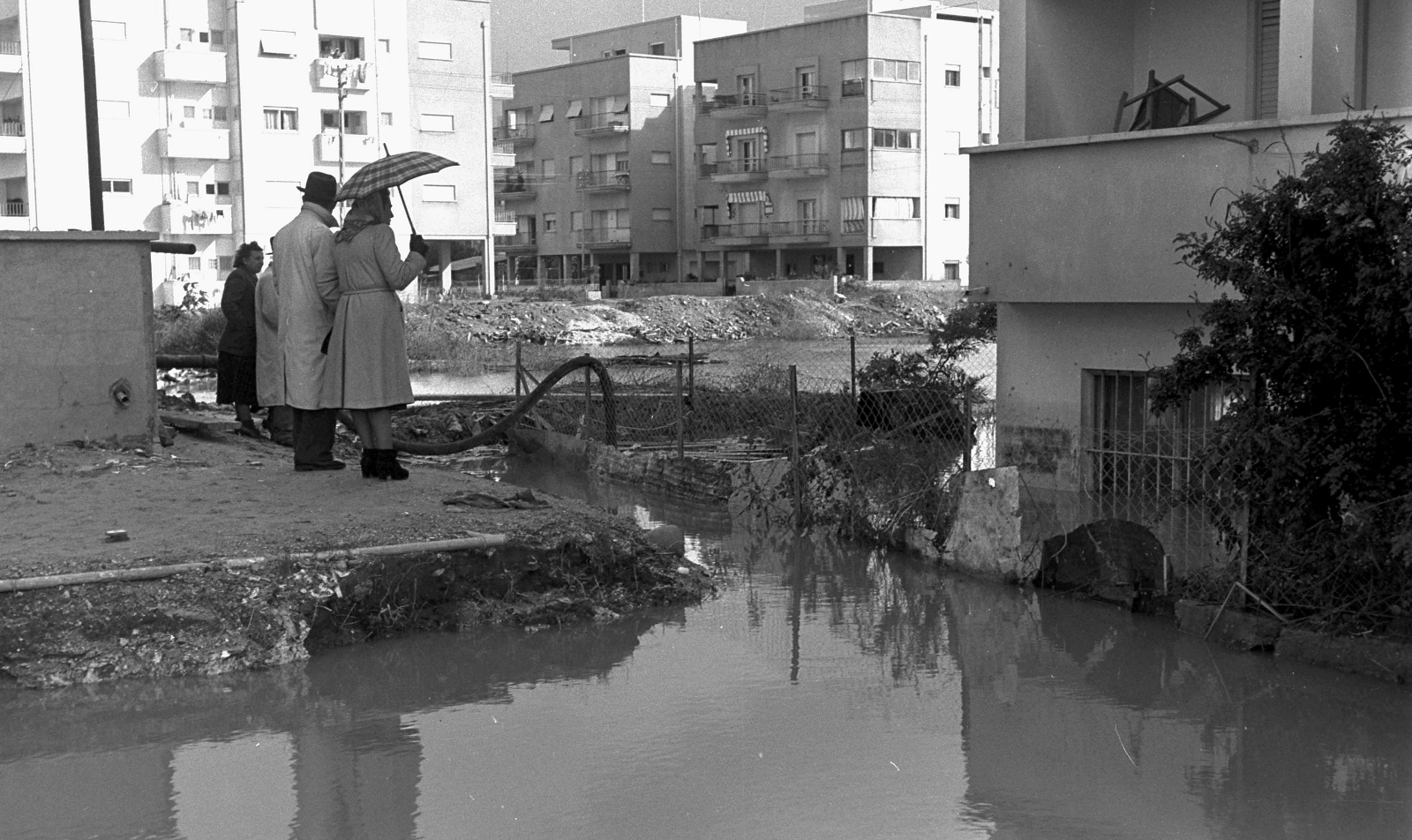
This was followed by snow in 1950. However, the winter of December 1951 was particularly harsh, with storms that lasted for 11 or 12 straight days.
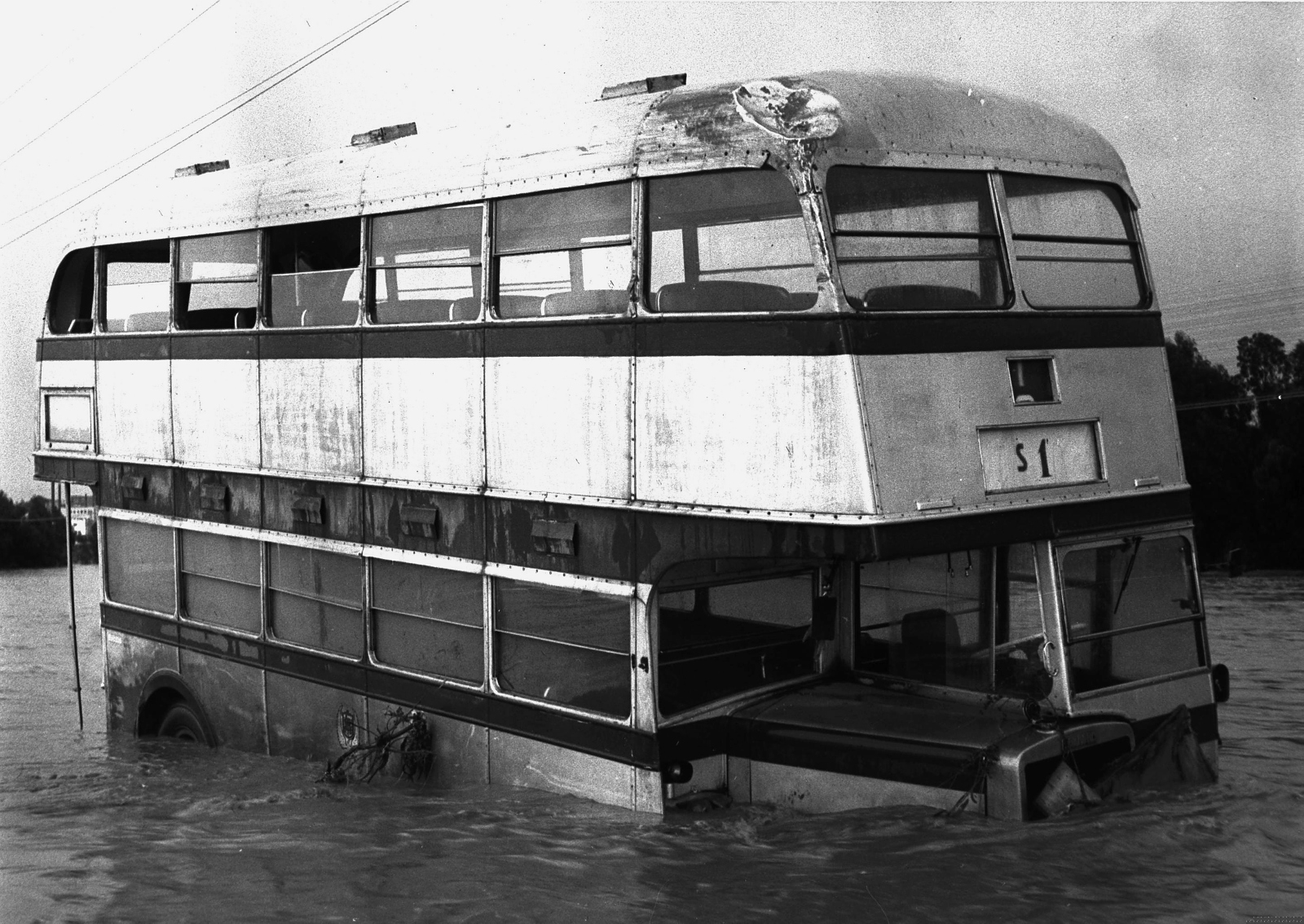
Despite the rain in 1955, nothing could keep literature-loving Tel Avivians from a 90%-off sale at the Pales bookstore at 119 Allenby Street.
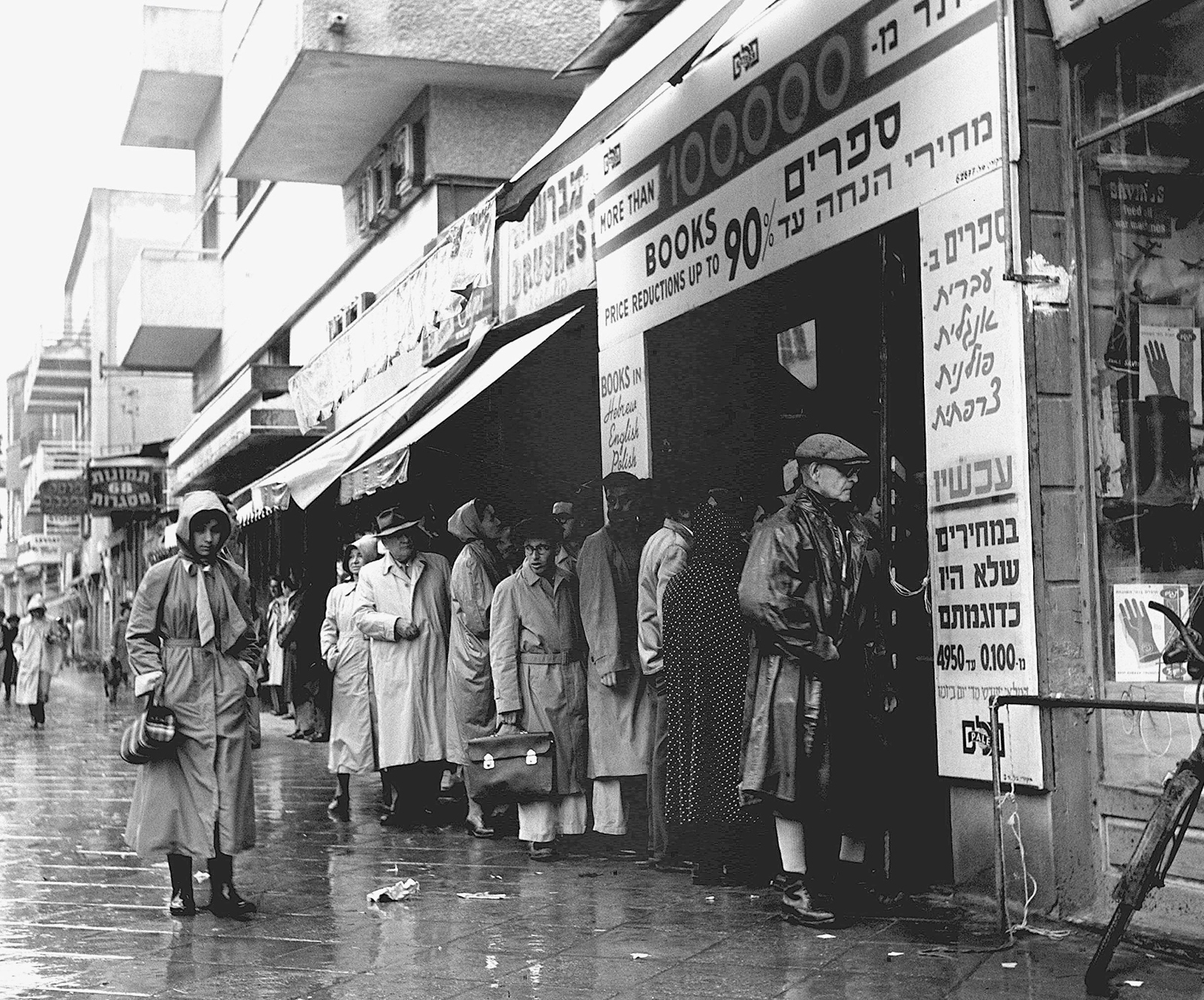
The heavy rain that year washed out the Montefiore neighborhood in southern Tel Aviv.
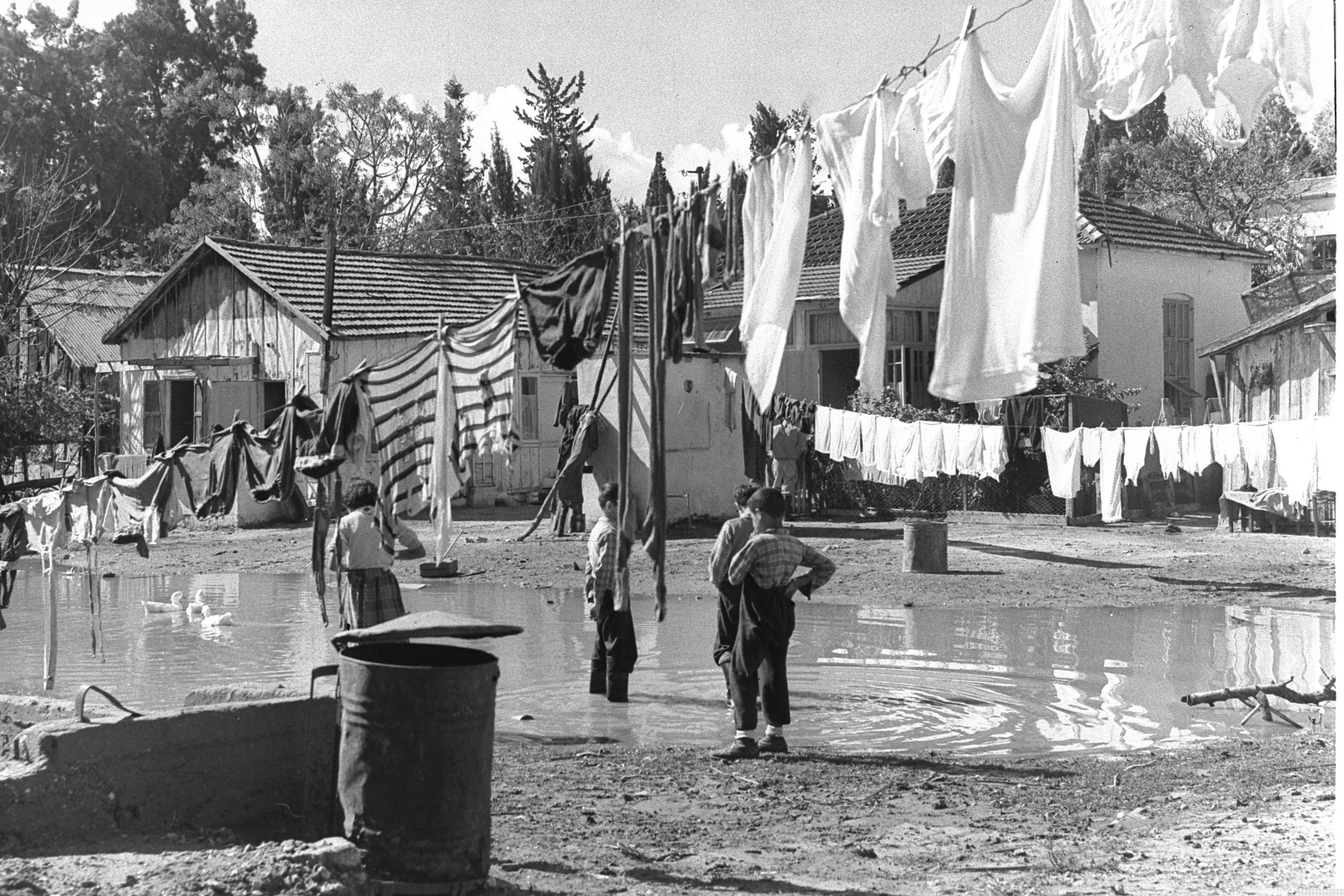
Arlozorov Street couldn’t catch a break in December of 1956, when heavy rains flooded the entire coastal plain.
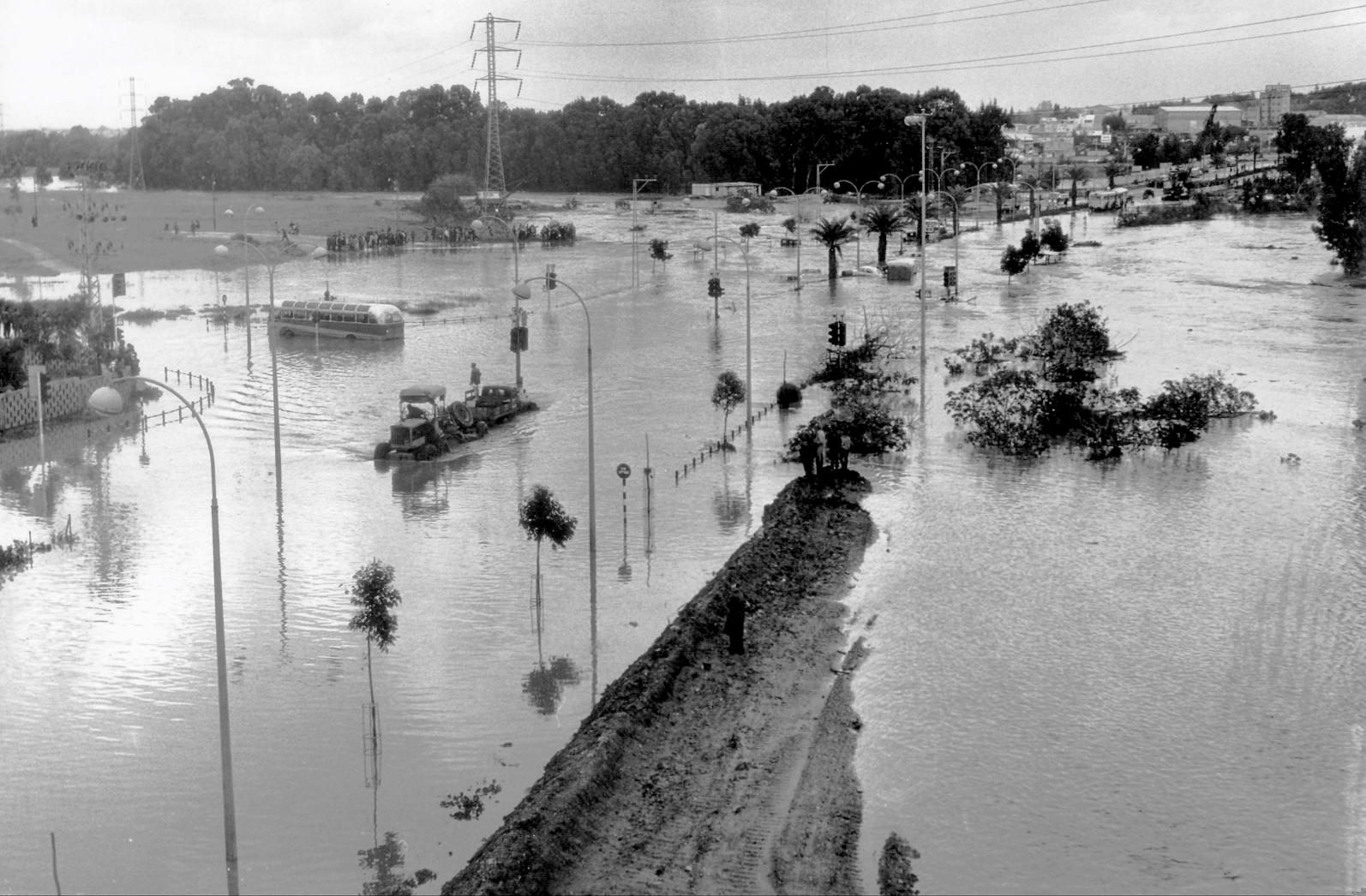
In 1962, it even rained in May as crowds lined the streets for the annual Independence Day parade. Wet weather almost caused the annual IDF Air Force airshow to be cancelled. Fortunately, the sun came out towards the end of the parade and the airshow went ahead as planned.
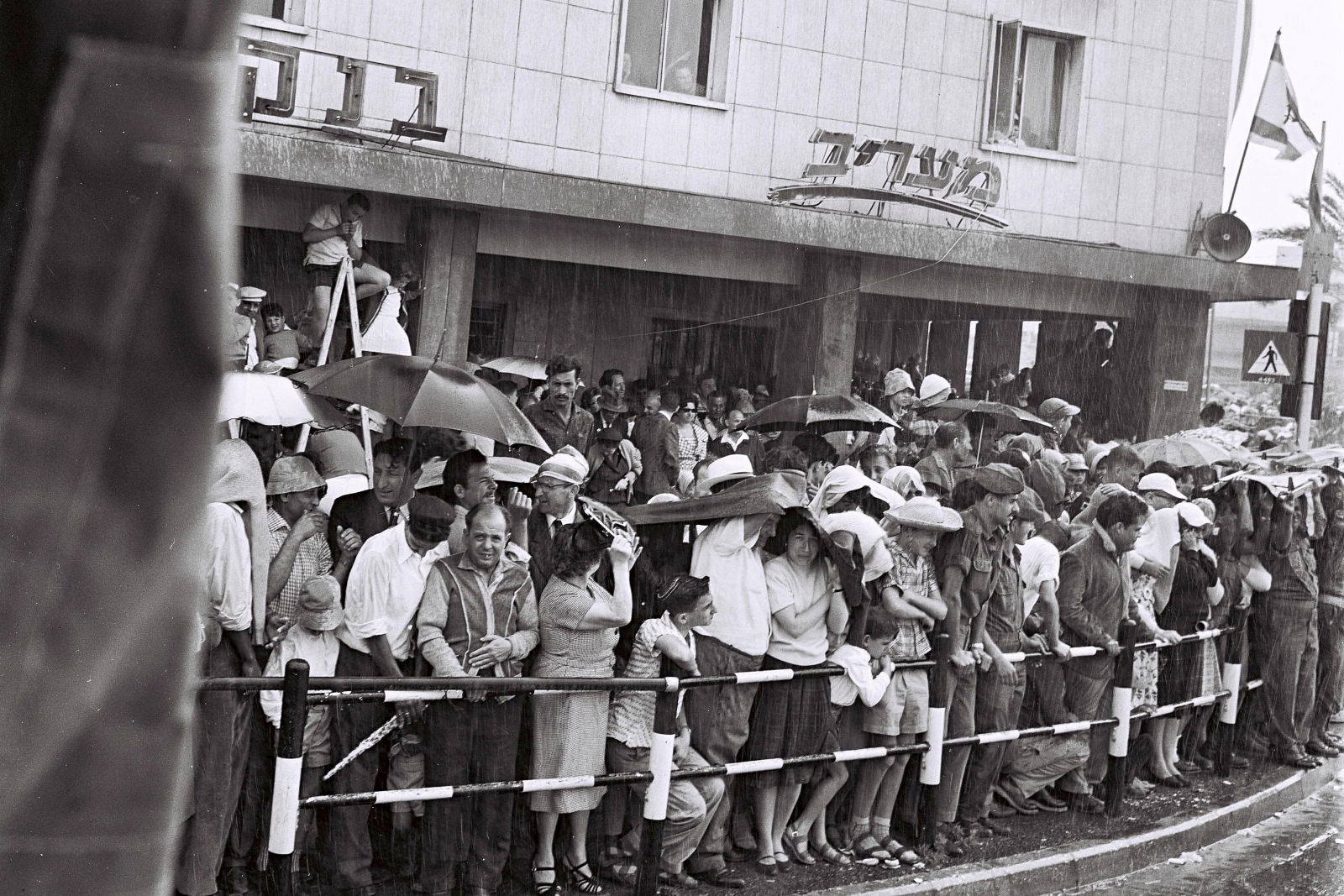
As happens each year, rains of 1974 caught Israel unprepared. The Montefiore neighborhood – now well-known for its many car repair garages – was, once again, under water.
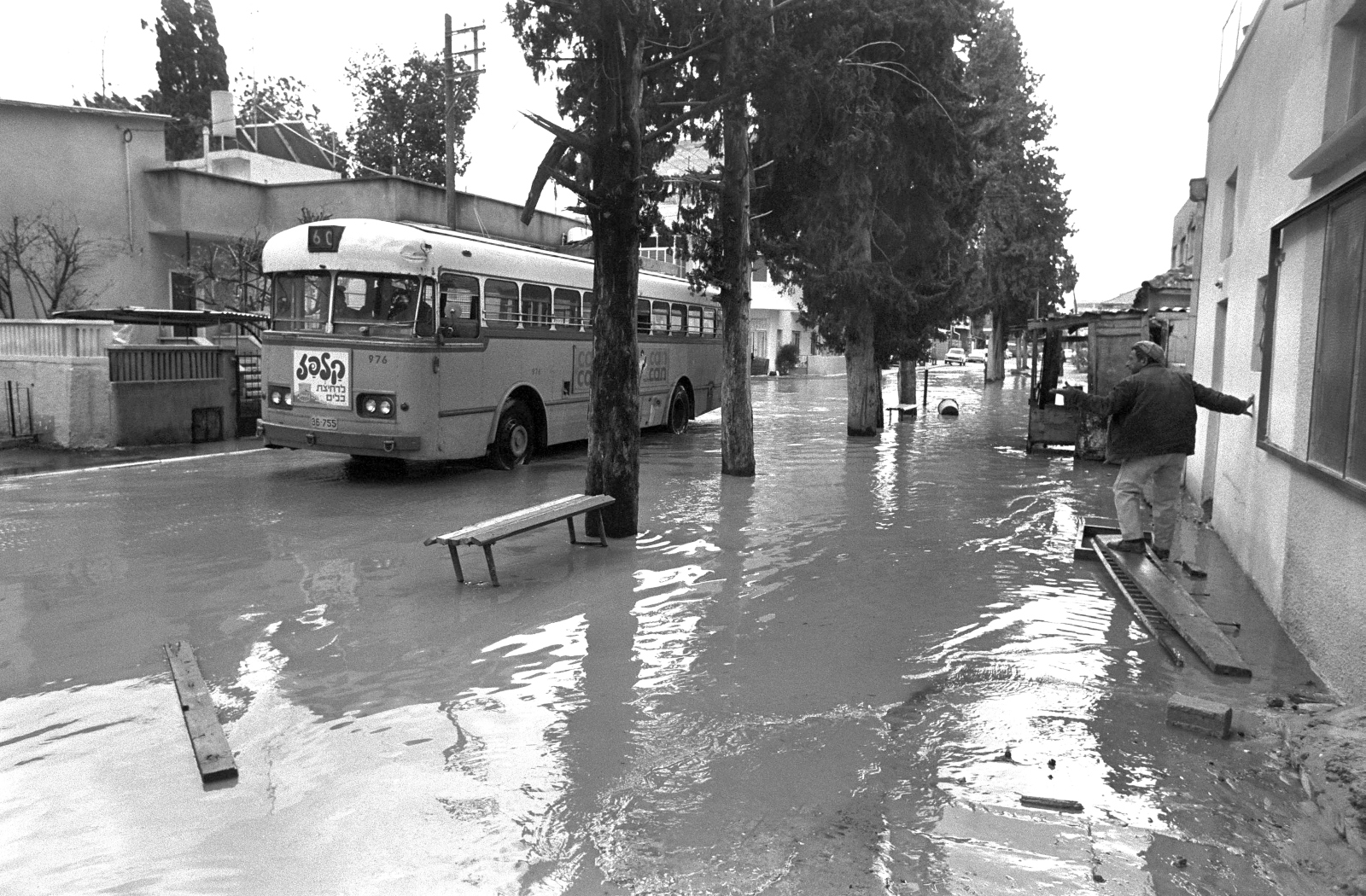
But it was the torrential winter of 1992 – still the record-breaking year for rainfall in Israel – that wreaked havoc on the municipal infrastructures of Tel Aviv and Ramat Gan, still struggling with the after-effects of the First Gulf War only a year before.
On January 1, 1992, two friends left work early to shoot an amateur video, now posted in its entirety on YouTube. The video shows the extent of flooding all around Tel Aviv and is an amazing documentation of the day’s events.
In 2000, the rains came in October and inundated the entire Dan region. Rescue crews were called in to evacuate residents of Bat Yam, with police patrolling the streets by hassekeh, an Israeli invention used by lifeguards since the early 1930s.
And again, in 2013.
Will Tel Aviv ever be prepared for rain? How best to meet the challenges posed by a drainage infrastructure that hasn’t kept pace with the city’s rapid growth?
Some problems, like the topography of certain low-lying neighborhoods – such as Montefiore – may be insurmountable. Other occurrences, like a freak downpour that happens only once in many decades, present risks a city may be willing to take, considering the high infrastructure costs.
There is some light breaking over dark horizon: Israel’s Planning Administration recently issued draft guidelines for urban runoff management that would provide a long-term solution. When it comes to infrastructure, the experts say, there are no short-term solutions.




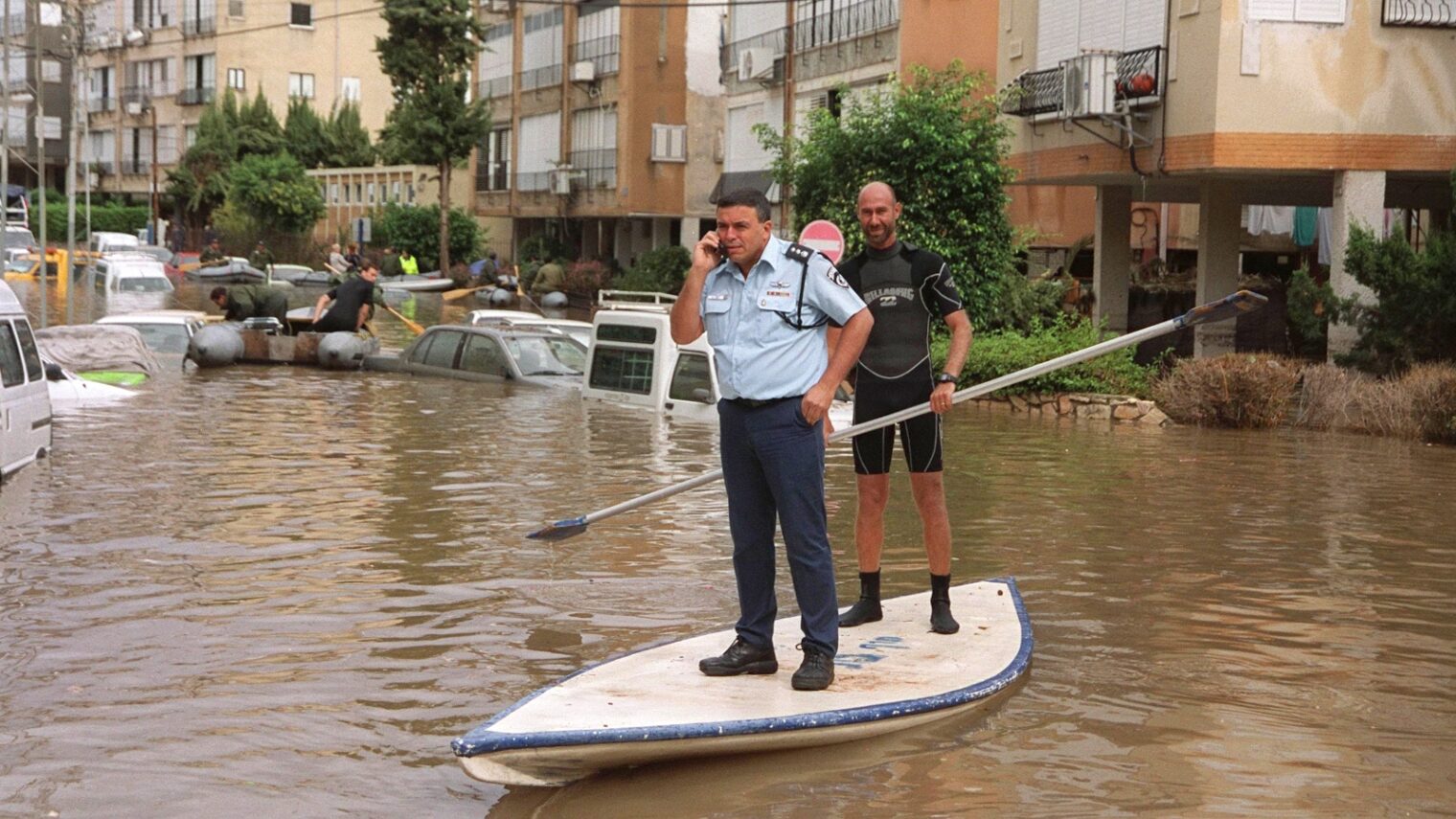








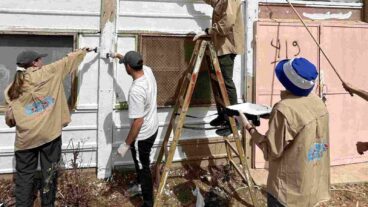


![Elections 1977 – Likud posters] In 1977, Menahem Begin led an election upset as Israel’s first non-Labor prime minister. Credit: GPO Elections 1977 – Likud posters] In 1977, Menahem Begin led an election upset as Israel’s first non-Labor prime minister. Credit: GPO](https://static.israel21c.org/www/uploads/2019/09/Elections_1977___Likud_posters_-_GPO-768x432.jpg)
